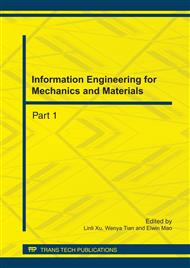p.200
p.207
p.213
p.217
p.221
p.225
p.229
p.233
p.237
Structural Evolution of Natural Flake Graphite with Different Particle Sizes during the Intercalation and Exfoliation Processes
Abstract:
In order to investigate the structural evolution of natural flake graphite with different particle sizes during the intercalation and exfoliation process, we used three natural graphites, 35, 50 and 80 mesh, as the raw material and investigated the characteristics of the three chemically prepared graphite intercalation compounds (GICs) of H2SO4 and the three corresponding residue GICs (RGICs). Expanded graphites (EGs) were prepared by rapidly heating the RGICs to 1000 °C in a muffle. The Results show that with decreasing the raw graphite particle size, the oxidizing reaction degree of GIC increases, but the intercalating reaction degree decreases. For RGICs, the relative ratio of RGIC phase in a sample decreases with decreasing the raw material particle size. In addition, decreasing the raw graphite particle size decreases the expanded volume of EG.
Info:
Periodical:
Pages:
221-224
Citation:
Online since:
July 2011
Authors:
Keywords:
Price:
Сopyright:
© 2011 Trans Tech Publications Ltd. All Rights Reserved
Share:
Citation:


